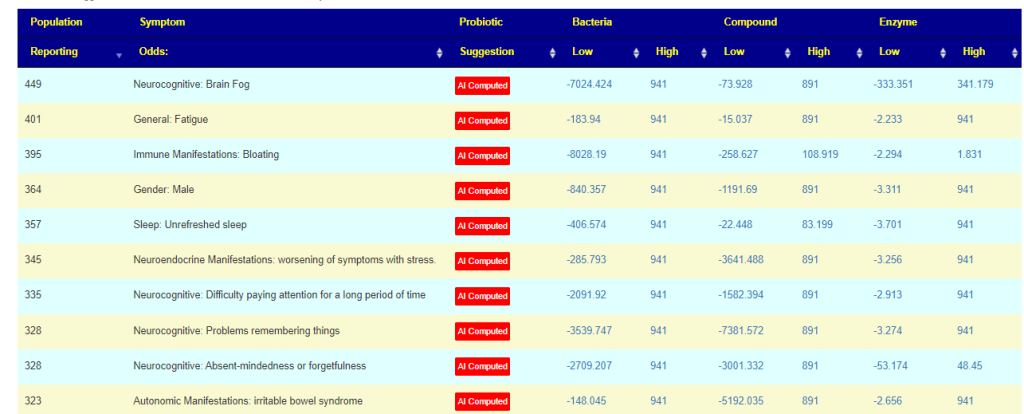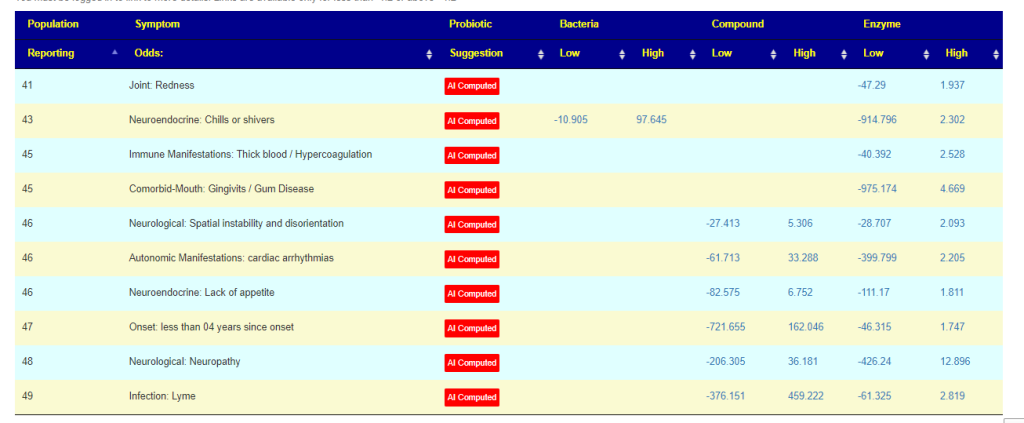For more background on the mathematics see the FUTURE POST. For an overview of picking probiotics, see Ways of Choosing Probiotics
Odds lead to a new insight
During the revision and on-going audit of the Microbiome Prescription web site, I used an Artificial Intelligence technique to compute odds of various things to symptoms reported by people who uploaded. I did a chart of odds, and for two items, the expected shape matched a priori expectations — a bell curve like (normal distribution) chart appeared. The last item, blew me away as it was not expected….



This leads to a shortage of enzymes contributing to the symptoms!! Of course, you cannot walk into a health food store and order enzymes. I had earlier done work on computing probiotics to compensate for too low enzymes in a specific sample. I adapted the same model for symptoms (without needing a specific sample) and found that I can compute the weight of different commercial probiotics in their predicted impact on symptoms. Remember we are talking mathematical model and not clinical experience.

You can just click to see what is computed. Note that lower (more negative) Enzyme Low is, the more likely that it will help. For example Brain fog is -333, while general fatigue is just -2.233.

My general suggestion is to short list to the probiotics that are available to you near the top of the list. Then start with just one, ideally with a small number of species (1 or 2). After 2 weeks or one bottle, move on towards ones with more species.
Remember Dosages!
Remember to start low and work up to the same dosages used in effective clinical trials. Do not go down the homeopathic rabbit hole of thinking that because you are taking some random amount that you are taking sufficient!. First, probiotics do NOT persist (see this post). Second, insufficient dosages may not cause sufficient change (see this dosage page)
Post Script
In doing the above video, I realized why certain “magic” numbers showed up. No one or too few people with a symptom and a bacteria. If you have 41 people with the symptoms and 100 people with the bacteria, then you expect in a sample size of 2000 people to get a few people with symptom and the bacteria. If you get none or just 1, it breaks the computation. One could jump to the conclusion that having such bacteria stops the symptoms….. a dangerous conclusion to jump to.
Below is the page with low counts of symptoms — as you can see by the blanks, often there was nothing found with low symptom reports.

Future Consensus Suggestions
On the backlog is a page that will use a sample with the symptoms that a person has entered to compute the best for all of their reported symptoms and microbiome — stay tune!
Recent Comments